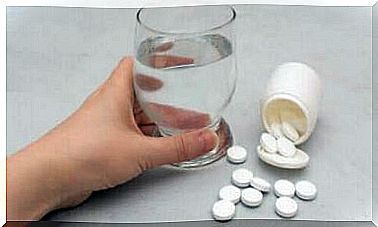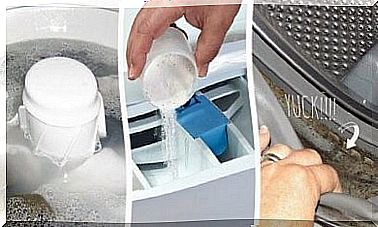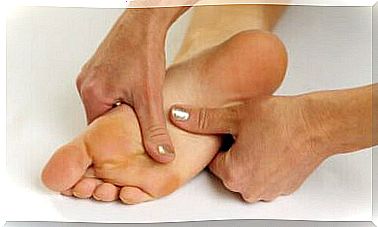Abdominal Circumference – How Much Should It Be?

The abdominal circumference is not only of aesthetic importance. If fat accumulates in this area of the body, it becomes a cardiovascular risk factor. To find out this value, just wrap a meter around the waist, at the level of the navel.
What is the limit that should not be exceeded in the circumference of the abdomen? The World Health Organization (WHO) determines that the circumference of the abdomen for women should not exceed 88 centimeters, while for men the limit is 102 centimeters.
The risk of having an abdominal circumference larger than normal
In case of obesity, cardiovascular risk should always be considered. Meanwhile, the risk increases even more if the abdominal circumference exceeds what is considered healthy. This is because it means an increase in circulatory problems.
If the extra pounds are distributed evenly in different parts of the body, there is a real danger of heart disease. But it increases significantly when it stores more fat in the abdomen than in other parts of the body.
This is because fatty tissue in the abdominal cavity contains cells called adipocytes that produce a certain amount of hormones with metabolic value.
These adipocytes work by releasing free fatty acids, which the liver metabolizes for energy instead of glucose. As a consequence, sugar that is not used by the liver remains in the body and its levels rise.
This process causes an increase in blood lipids on the one hand and an increase in blood glucose on the other hand.
Given these facts, we have a better understanding of why a convex belly is a much bigger problem than aesthetic issues as it can lead to metabolic syndrome. This syndrome is characterized by an increase in bad cholesterol and triglycerides, as well as a decrease in good cholesterol, an increase in blood pressure, and hyperglycemia.

How to correctly measure the circumference of the abdomen
To measure the circumference of the abdomen, we only need a tailor’s meter and a few tips. Doctors usually take this measurement during a routine checkup. They also do this when they notice an increase in their body mass index (BMI), which indicates possible obesity or overweight.
To correctly measure your abdominal circumference, you need to stand with your arms along the sides of your body. Then loosen the strap if you are using it at this point. You also need to pick up a shirt or garment covering your torso to measure the circumference directly on the skin and at navel level.
The tape measure or meter should be positioned below the chest and above the top of the hipbone. It is best to keep your abdomen relaxed. Before you wrap the deck with a metro, it is best to deflect it, and after taking the measurement, write down the data immediately so as not to lose information.
Types of obesity depending on the circumference of the abdomen
There are two types of obesity, depending on where the excess fat is located in the body. One of them is peripheral obesity. It occurs when obesity is localized in the thighs, buttocks or hips. The second type is central obesity, where fat is found almost exclusively at the level of the abdomen.
When a person has central obesity, they are at twice the risk of developing cardiovascular disease. However, it should be remembered that excess fat is always harmful, no matter where it is located.
When a person has more abdominal or visceral fat, it is called abdominal, android, or apple-shaped obesity. It is more common in men. While obesity due to a build-up of fat in the arms, legs and hips is called gynoid obesity, or pear-type obesity, which is more common in women.
Very important organs are located around the circumference of the abdomen: the liver, stomach, spleen and gallbladder. It is these organs that suffer from the action of the fat located around them. For women, hormonal changes in menopause contribute to marked changes in their body structure.
As a consequence, in women during this period, the abdominal circumference may increase significantly if they do not take care of a proper diet.

What if my belly circumference is larger than normal?
In order to avoid an increase in adipose tissue in the abdominal circumference, it is advisable to lead a healthy lifestyle. It is recommended that you perform aerobic exercise in conjunction with other strength exercises. The former contribute to the expenditure of calories, while the latter strengthen muscles and improve body posture.
A healthy diet, free from saturated fats and simple sugars, also helps you control your weight. In addition, this type of diet is beneficial for the heart. In contrast, hydration is an important factor as it helps prevent fluid retention. In turn, a good rest relieves stress and improves hormonal functions.
Body posture is also of great importance. It is not advisable to sit for hours with an abnormally distorted spine. This position promotes the relaxation of the abdominal muscles, and thus the accumulation of fat in the area.
Finally, at least once a year, it is necessary to undergo a medical examination, during which the doctor will measure the circumference of the abdomen. Depending on the result, it will encourage further efforts to reduce it or tighten its recommendations.









